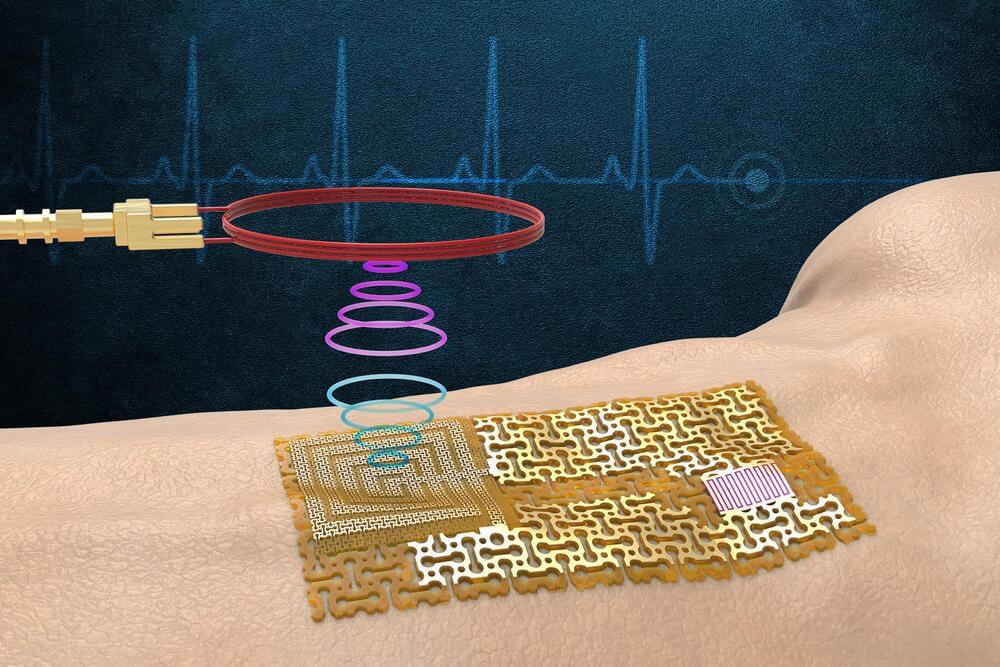Wearable sensors are ubiquitous thanks to wireless technology that enables a person’s glucose concentrations, blood pressure, heart rate, and activity levels to be transmitted seamlessly from sensor to smartphone for further analysis.
Most wireless sensors today communicate via embedded Bluetooth chips that are themselves powered by small batteries. But these conventional chips and power sources will likely be too bulky for next-generation sensors, which are taking on smaller, thinner, more flexible forms.
Now MIT engineers have devised a new kind of wearable sensor that communicates wirelessly without requiring onboard chips or batteries. Their design, detailed in the journal Science, opens a path toward chip-free wireless sensors.
